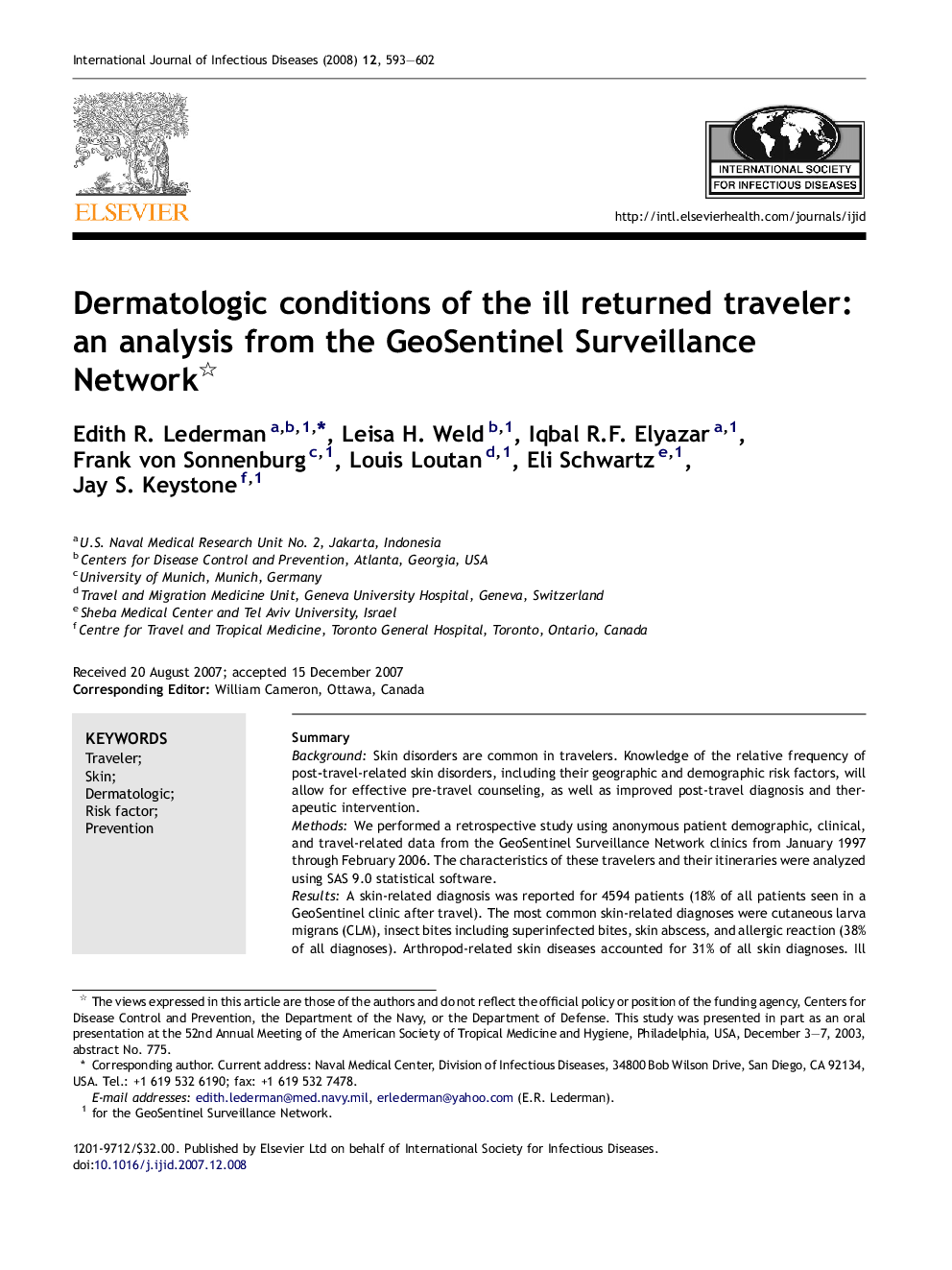| کد مقاله | کد نشریه | سال انتشار | مقاله انگلیسی | نسخه تمام متن |
|---|---|---|---|---|
| 3364819 | 1592141 | 2008 | 10 صفحه PDF | دانلود رایگان |

SummaryBackgroundSkin disorders are common in travelers. Knowledge of the relative frequency of post-travel-related skin disorders, including their geographic and demographic risk factors, will allow for effective pre-travel counseling, as well as improved post-travel diagnosis and therapeutic intervention.MethodsWe performed a retrospective study using anonymous patient demographic, clinical, and travel-related data from the GeoSentinel Surveillance Network clinics from January 1997 through February 2006. The characteristics of these travelers and their itineraries were analyzed using SAS 9.0 statistical software.ResultsA skin-related diagnosis was reported for 4594 patients (18% of all patients seen in a GeoSentinel clinic after travel). The most common skin-related diagnoses were cutaneous larva migrans (CLM), insect bites including superinfected bites, skin abscess, and allergic reaction (38% of all diagnoses). Arthropod-related skin diseases accounted for 31% of all skin diagnoses. Ill travelers who visited countries in the Caribbean experienced the highest proportionate morbidity due to dermatologic conditions. Pediatric travelers had significantly more dog bites and CLM and fewer insect bites compared with their adult counterparts; geriatric travelers had proportionately more spotted fever and cellulitis.ConclusionsClinicians seeing patients post-travel should be alert to classic travel-related skin diseases such as CLM as well as more mundane entities such as pyodermas and allergic reactions. To prevent and manage skin-related morbidity during travel, international travelers should avoid direct contact with sand, soil, and animals and carry a travel kit including insect repellent, topical antifungals, and corticosteroids and, in the case of extended and/or remote travel, an oral antibiotic with ample coverage for pyogenic organisms.
Journal: International Journal of Infectious Diseases - Volume 12, Issue 6, November 2008, Pages 593–602